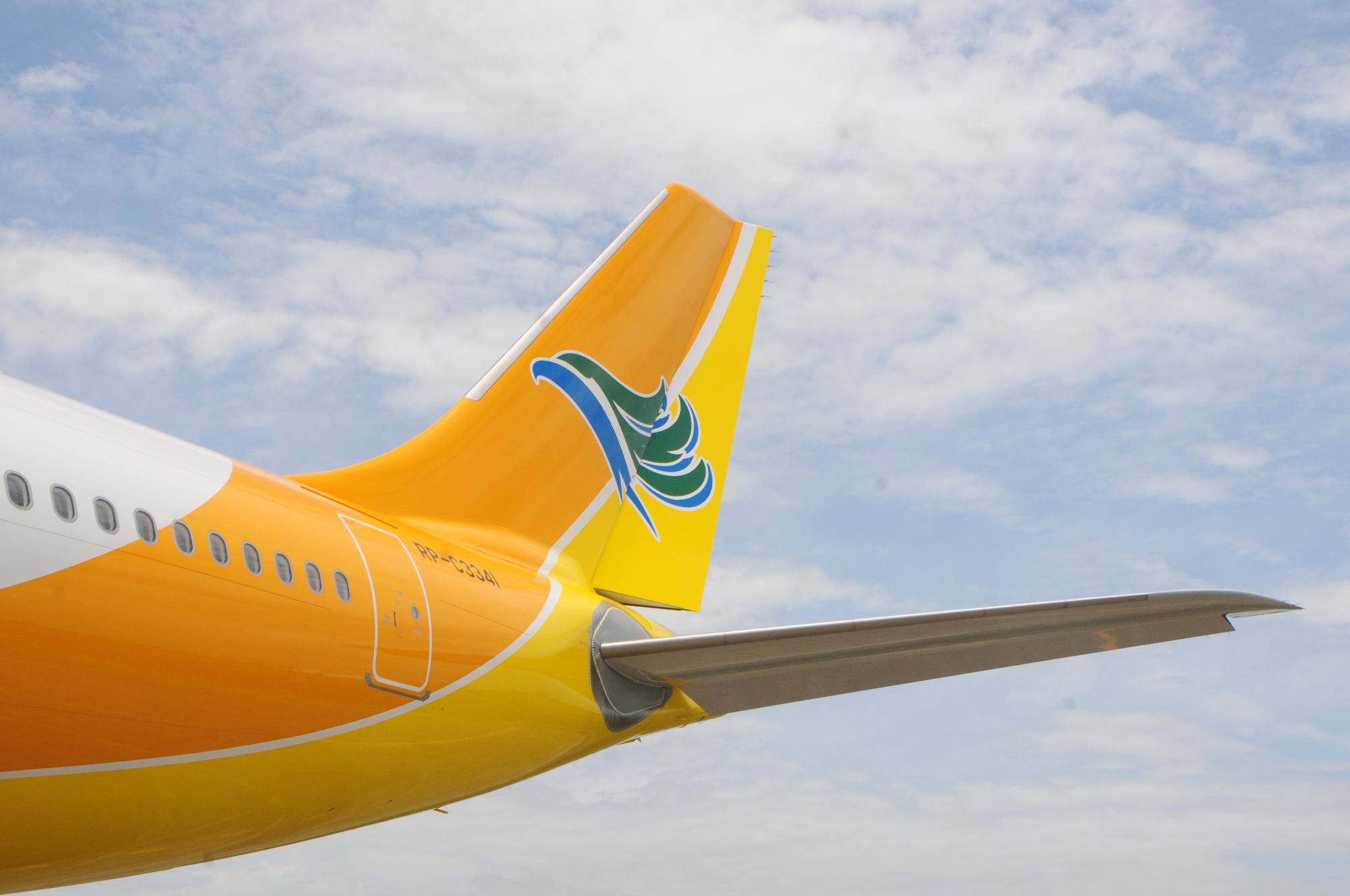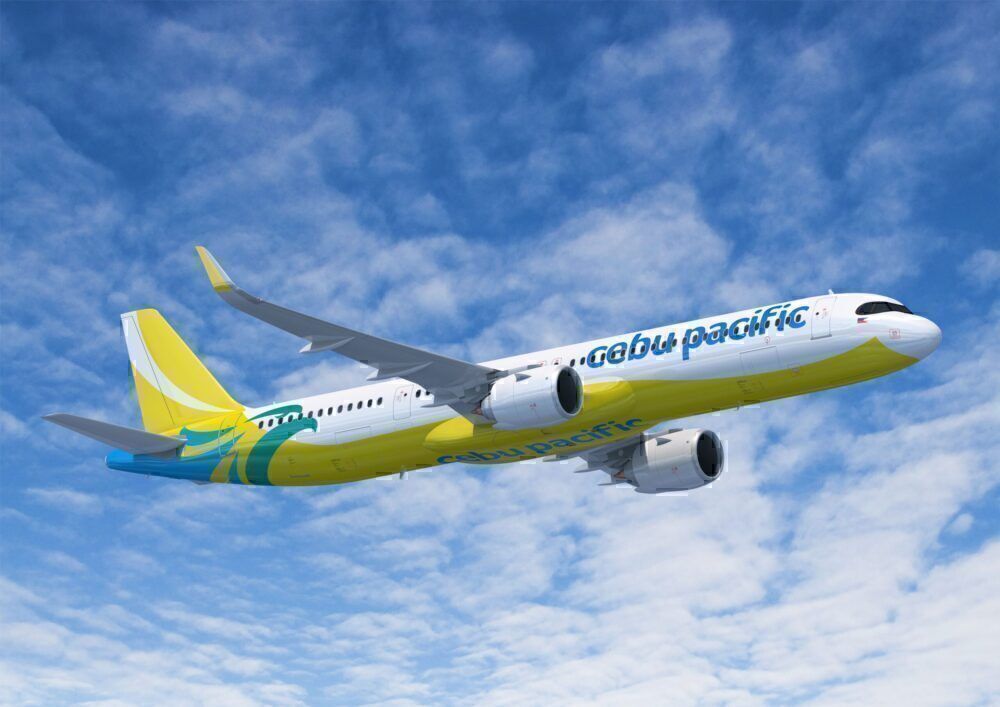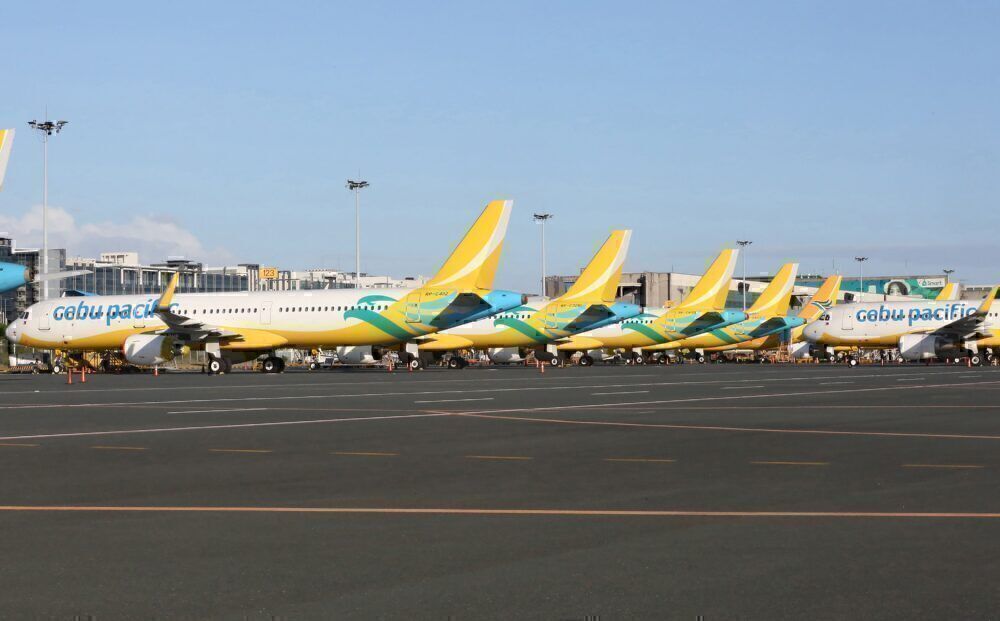In the second half of 2019, Cebu Pacific signed a multi-billion dollar aircraft deal with Airbus. The new planes, including A321XLRs, were going to shake the airline up, help it fly into new markets, and set Cebu Pacific's future direction. But things have changed since 2019. What's going on at Cebu Pacific with those orders, particularly the A321XLR?
High hopes for the A321XLR at Cebu Pacific
In June 2019, Cebu Pacific signed a memorandum of understanding with Airbus to buy 31 aircraft, including ten A321XLRs. That got firmed later in 2019 with a purchase order. The first A321XLRs are set to touch down in the Philippines in 2024. At the time, Lance Gokongwei, President and CEO of Cebu Pacific, said;
"Our strategy is to replace our fleet with bigger and more fuel-efficient aircraft to fly more passengers utilizing our existing slots while reducing our environmental footprint per passenger. We will be operating an all-Airbus NEO fleet by end-2024 and retiring our older generation jets."
Cebu Pacific is an all-Airbus airline. It has a range of narrowbody planes on order from Airbus. As of October 31, Cebu Pacific was waiting for 38 narrowbody planes. However, the airline is particularly keen on the A321XLR.
Cebu Pacific likes the A321XLR's range, up to 4,000 nautical miles. The low-cost carrier wants to squeeze in 240 passengers and fly them for 11 hours nonstop. That represents an exciting capability for Cebu Pacific, allowing the airline to develop new markets from key cities other than Manila.
Of interest to Cebu Pacific are new markets in India, Russia, and China. In August 2019, CAPA TV interviewed Cebu Pacific's Chief Executive Advisor Mike Szücs.
“There’s lots of route planning to go, but I think by the time we get to 2024, we will want to be opening our eyes,” Mr Szücs said.
“China is developing a lot of airfields. These secondary and tertiary airports in China will be big places, so I think those will be great for inbound tourism, particularly from somewhere like Cebu.”
Stay informed: Sign up for our daily aviation news digest.
A lot has changed since the A321XLR order in 2019
There has been a lot of water under the bridge since late 2019. Twelve months ago, Airbus was flying high. Its order book was healthy, and the long term outlook sunny. At the time, the aircraft manufacturer predicted selling more than 1,000 of the long-range narrowbody A321XLR. Cebu Pacific was joining a range of other airlines lining up for the new plane, including local competitor AirAsia X who has ordered 30 of them.
Cebu Pacific is a significant player in the Philippines aviation scene. But its domestic market share has been on the decline in recent years. From a peak of 60% in 2014/15, by the first quarter of 2019, it sat at just 50%. In particular, slot constraints at Manila's Ninoy Aquino International Airport are hampering Cebu Pacific's ability to grow by adding extra flights.
Instead, Cebu Pacific plans to replace its 15 ATR-72s with the bigger Airbus narrowbodies. Bigger planes mean the airline can carry more passengers without operating more flights. Right now, the average seat capacity per departure is around 200 seats. When Cebu Pacific gets the Airbus aircraft it has ordered, that should increase to about 280.
Cebu Pacific hedges its bets on aircraft orders
It's a relatively tidy strategy. That might explain why Cebu Pacific hasn't tinkered with its Airbus orders, including the A321XLR, despite the travel downturn. But it's not ruling out doing so. In an Aviation Week Network interview last week, Xander Lao, Chief Strategy Officer Of Cebu Pacific, hedged his bets on aircraft orders.
"We know that demand is going to be relatively slow over the next few years,"
"We've had discussions with key suppliers to see whether we can defer some of the orders that were supposed to come on schedule and clearly trying to extend that a little further down the road.
"Because I think would be unrealistic for anyone to think that next year we'll have a 100% of our 2019 levels. That's not going to be the case. So I think we've done some homework in terms of the fleet, in terms of trying to branch that out into the future."
As an answer, it doesn't say much - aircraft orders may change, or they may not. There are no timelines or hard data. But it does suggest Cebu Pacific's order book at Airbus is well worth keeping an eye on.



